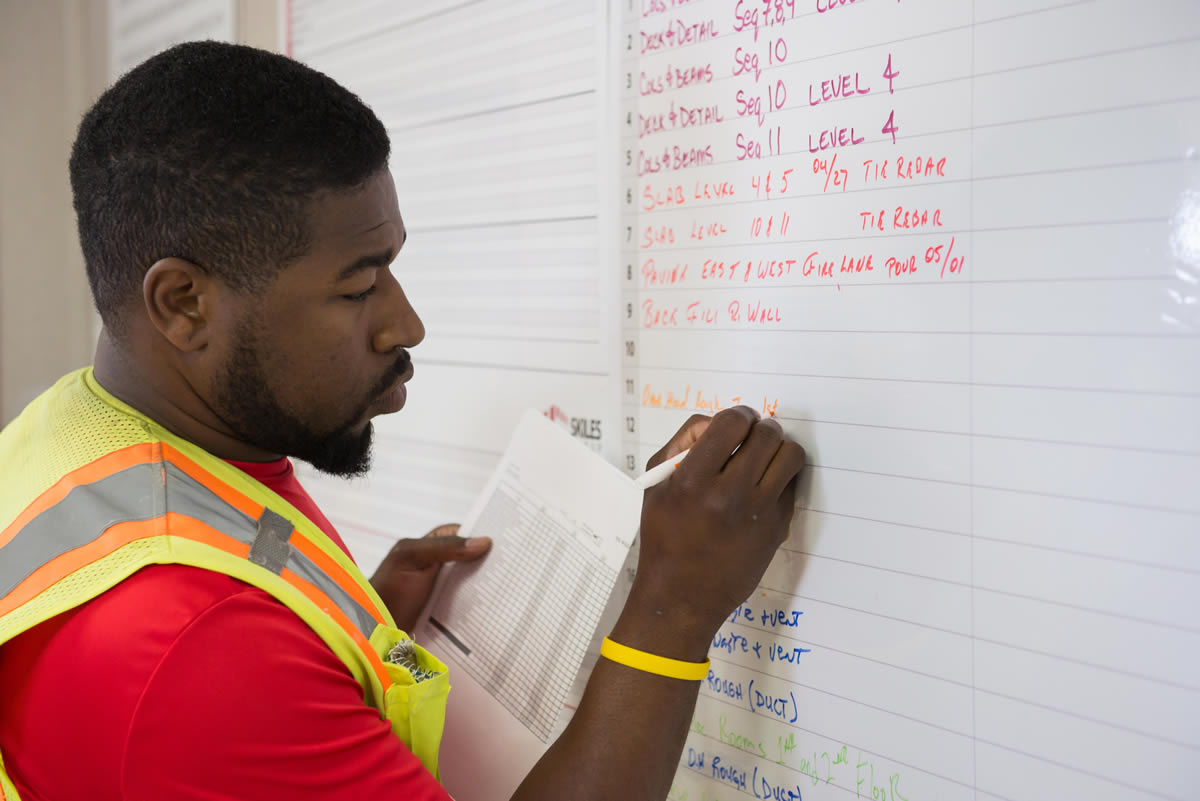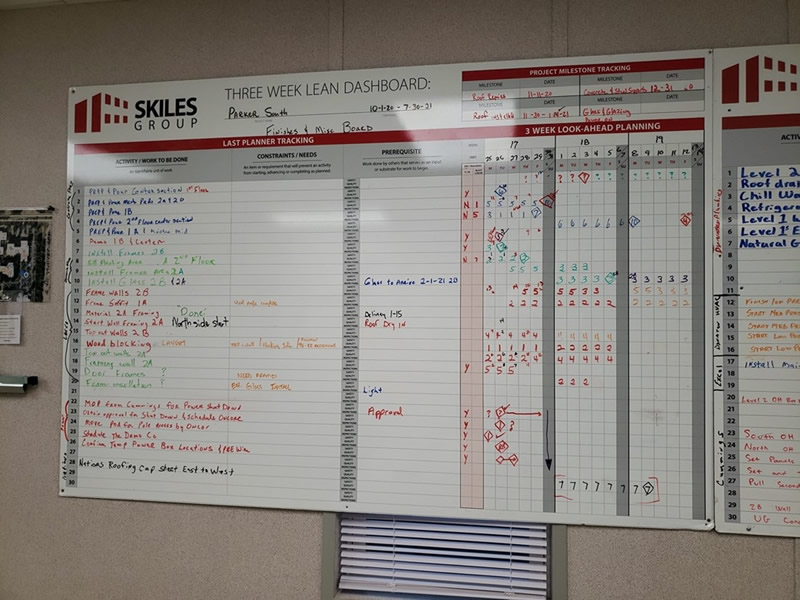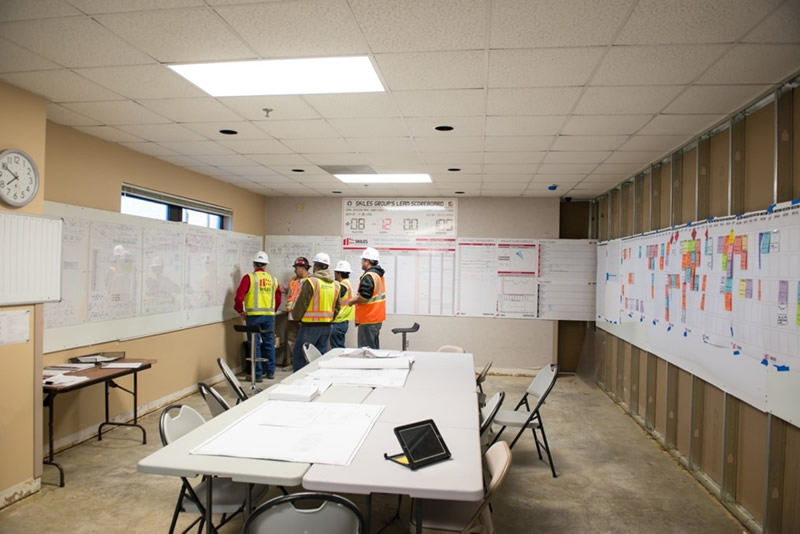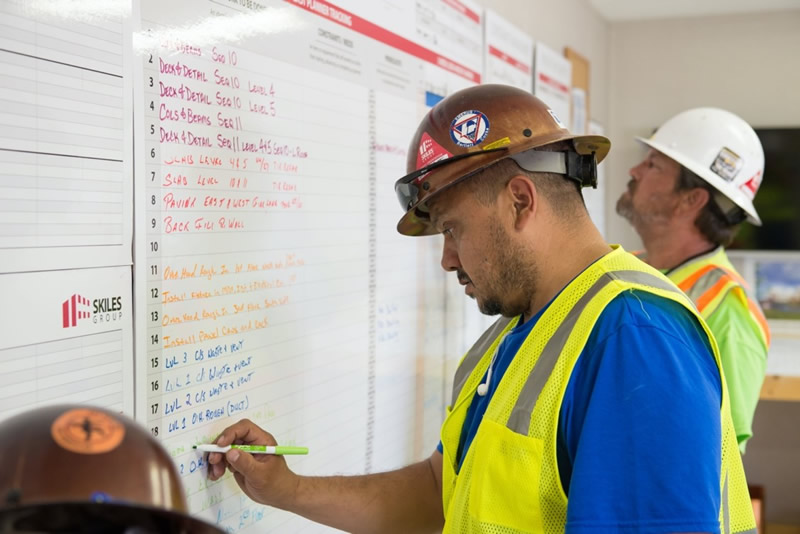Last Planner System implementation in construction can be incredibly challenging. That is why Lean expert and author Keyan Zandy recommends that construction teams start small with Lean implementation instead of trying to take on too much too soon. In this piece, Keyan explains how the Daily Huddle is a great first step in the Last Planner System implementation in construction and from there moves on to a more advanced discussion.
Utilizing the Last Planner® System in your Daily Huddle
We believe that field teams must “start small” with Lean implementation on the jobsite, before diving into The Last Planner® System (LPS). Here’s why: with over 10,000 general contractors in the United States, there are not enough experts to accurately explain and teach the intricacies and value of LPS—especially on smaller construction projects which, by number, comprise a majority of the projects in our industry.
Daily Huddle Implementation
In our experience, a daily huddle is a far less intimidating and much more collaborative first step, helping to ease field leaders into understanding Lean’s culture and tools. If they are unused to cooperatively planning their work with a team or have never been empowered to make commitments, diving into the tools of LPS could be disastrous—especially without a coach or champion to guide them along the way. But once the culture is right and the field sees the value in the daily huddle, they will be much more curious about and accepting of LPS and can more readily see the benefit it brings. So, if you’ve established a strong daily huddle routine, your team is effectively using visual communication tools and a constraint board, and you feel the team is ready for LPS then this blog post is for you.
Last Planner System Implementation
In other blogs, we have discussed Master Scheduling and Phase Scheduling (also known as Reverse Phase Scheduling or Pull Planning). Once the project team has pull planned the upcoming milestone, the project superintendent must issue a Look-Ahead Schedule (also known as a 6-Week Schedule). Look-ahead planning allows the team to review the upcoming six weeks, every week. The six-week look-ahead gives the team a road map of the upcoming work and allows last planners time to identify and clear constraints that might slow down or prevent upcoming work from being completed as planned. The six-week schedule could be produced as a Gantt chart from scheduling software or in Excel, where you can break out work by trade, color code activities, add a constraint column, etc. It is important that the six-week look-ahead be kept updated with what is currently going on in the field, and that it is sent to the trades each week.
From there, your team can implement Weekly Work Planning (also known as Commitment Planning), which will be the differentiating factor in your daily huddles once the team is bought into the collaborative process. In our book, The Lean Builder, we discuss a Three-Week Look-Ahead dashboard that can be introduced into the daily huddle to help keep everyone on track.
If you are ready to run your daily huddles using a Three-Week Look-Ahead dashboard, here’s is weekly agenda you can follow:
Filling out the boards for the first time:
- The project superintendent places a new 6-Week Milestone Schedule on the wall.
- The project superintendent writes milestones on the 3-Week Look-Ahead dashboard.
- The project superintendent and trades write activities, constraints, prerequisites, and manpower on the 3-Week Look-Ahead dashboard.
- The trade partners write material deliveries and inspections on the material delivery and inspection boards.
- The project superintendent takes photographs of all the boards.
The very first Daily Huddle:
- Huddle meeting begins.
- Trades discuss tasks for that day.
- Tasks that need visual coordination are marked on the elevation/floor plan boards, by the trade with their designated dry erase color.
- Issues that are brought up are written on the constraint board, and any items that require complex coordination between trades are coordinated after the huddle meeting.
- Meeting adjourns.
- Superintendent takes photographs of all the boards.
Weekly Routine Daily Huddle (Monday – Thursday):
- Huddle meeting begins.
- Trades discuss tasks for that day.
- Tasks that need visual coordination are marked on the elevation/floor plan boards, by the trade with their designated dry erase color.
- Issues that are brought up are written on the constraint board, and any items that require complex coordination between trades are coordinated after the huddle meeting.
- Superintendent reviews Constraint Board and erases resolved/completed items.
- Meeting adjourns.
- Superintendent takes photographs of all the boards.
Daily Huddle (Friday):
- Huddle meeting begins.
- Trades discuss tasks for that day.
- Tasks that need visual coordination are marked on the Elevation/Floor Plan Boards by the trade with their designated dry erase color.
- Issues that are brought up are written on the Constraint Board, and any items that require complex coordination between trades are coordinated after the huddle meeting.
- Superintendent fills out PPC and root cause with the trades on the 3-Week Look-Ahead board.
- Superintendent reviews Constraint Board and erases resolved/completed items.
- Meeting adjourns.
- Superintendent counts promised work completed and not completed and fills out the Percent Plan Complete Board.
- Superintendent takes photographs of all the boards.
- Superintendent erases boards in preparation for the next week.
Filling out the boards (Friday after the huddle):
- The project superintendent places a new 6-Week Milestone Schedule on the wall.
- The project superintendent writes milestones on the 3-Week Look-Ahead dashboard.
- The project superintendent and trades write activities, constraints, prerequisites, and manpower on the 3-Week Look-Ahead Board.
- The trade partners write material deliveries and inspections on the material delivery and inspection boards.
- The project superintendent takes photographs of all the boards.
Lean Validation Process
As a project superintendent, be sure to review what your trade partners wrote on the boards and ask the following questions:
- Do the activities tie back to the look-ahead schedule?
- Are all the activities workable?
- Will the team understand what is required?
- Will the team understand what is needed from others?
- Are activities achievable within the planned period?
If the answer is No to any of these questions, ask the trade partner to revise what has been written.
Incorporating LPS
As with all things, practice makes perfect. Incorporating LPS will not be easy—but it will get easier every week, and after every huddle. The culture you create, the wins your team celebrates by starting small and adding tools incrementally, and the momentum these build helps to carry you through the rough, early days as you adapt to this new way of managing work in the field.
If you have lessons learned or tips to share that might help others as they embark on Last Planner System implementation in construction, please share them in the comments!













